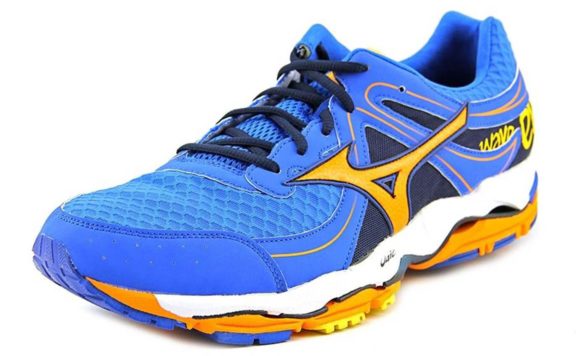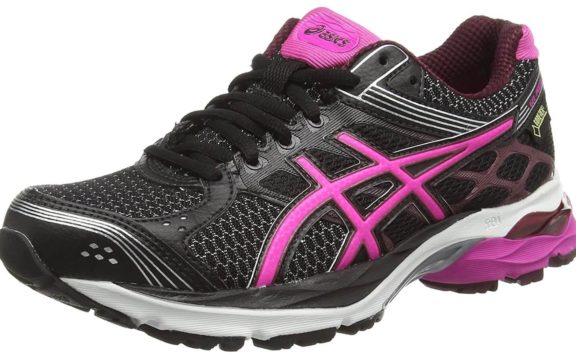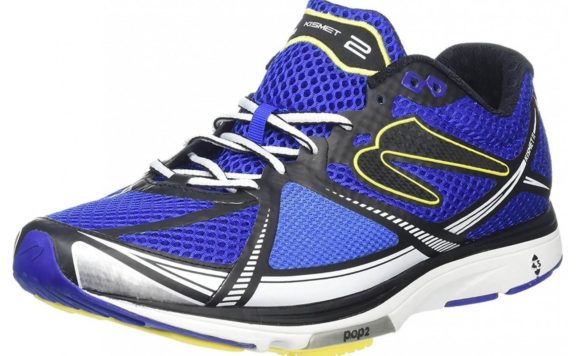Details
Brand
Brooks
Heel To Toe Drop
10mm
Breathability
7.3/10
Latest Version
No
Terrain
Road
Type
Cushioning
Key Features
• Super DNA Midsole provides comfort and cushion• Rounded and raised heel improves foot alignment and decreases strain• Outsole accentuates pressure zones to evenly disperse stress from running throughout the foot• 3D printed upper provides a secure fit without sacrificing ventilation• Multiple color choices for different stylistic preferences
Upper
3D printer technology was implemented in the construction of the Brooks Glycerin 13’s upper. The result of this particular manufacturing style is a shoe that fits comfortably around a runner’s foot without having any uncomfortable seams or being too tight. This particular aspect of the Glycerin 13’s design is a major improvement over the previous model. Mesh material is predominantly used on the upper and under the lacing, allowing for excellent breathability. Some pressure from the lacing system can be felt but it isn’t overwhelming to the point of severe discomfort or a loss in circulation. The key takeaway from the upper of these Brooks shoes is similar to that of the midsole and outsole, which is that they are exceptionally well designed with the implementation of innovative technology and material.
Midsole
Brooks uses a material they call Super DNA for their midsole for the purpose of facilitating a smooth and comfortable ride. Super DNA offers about 25% more cushioning than previous technology utilized by Brooks in their footwear, indicating a significant improvement. The main appeal to this new proprietary design material is its ability to conform to your foot during foot strikes. The heel drop on the midsole is around 10 mm, which would ordinarily lead to excessive heel striking. However, the energy diffusal properties of the Glycerin 13’s outsoles help to offset this tendency thanks to its pressure zone-accentuating design. The result of this design is a consistently supportive midsole that allows for smooth running transitions.
Outsole
The outsoles of the Glycerin 13 incorporate a design that emphasizes support of specific pressure zones. These include the heel, midfoot, and forefoot, and the targeted support offered to these areas allow runners’ feet to comfortably strike the ground. It prevents excessive impact on one portion of the foot by causing the pressure to disperse evenly across these multiple target points. This portion of the shoe is made from blown rubber, which manages to provide excellent grip on flat surfaces while weighing very little. All in all, this is a very impressively designed midsole, but many customers have complained that it isn’t very effective when running on wet surfaces.
Breathability
Thanks to Brooks’ use of 3D printing technology for the construction of this shoe’s upper, it is slightly less breathable than the Glycerin 12. This is because this new method of manufacture leads to the Glycerin 13 having a tighter fit on the foot. These shoes still offer a competent level of breathability but runners who have used the previous model will notice a difference. Despite a lack of air holes around the forefoot, this Brooks product is still about as ventilated as any average running shoe, largely because of its well-designed mesh upper.
Comfort
This is the most impressive aspect of these running shoes and where they really come into their own. The high heel drop allows for extra cushioning on the back end while the rounded heel alleviates any stress. The Super DNA infused midsole provides runners with a molded cushion that diffuses stress from foot striking, with any remaining pressure being distributed evenly along the foot thanks to the outsole’s emphasis on pressure zones. The upper fits securely around the foot while providing both excellent comfort and ample airflow. Some customers of the Glycerin 13 have complained that the cushioning didn’t last as long as they expected and that the fit was on the narrow side. Other complaints made by runners about these shoes concerned discomfort felt around their toes when running on inclined surfaces. It seems that the best way to ensure maximum comfort in these shoes is to treat them gingerly, order a half size larger for individuals with wider feet, and avoid running on hills.
Style
There are a few different color schemes runners can purchase of these shoes. This versatility in style options allows runners to choose whether they want to stand out on the road with big and bright colors or showcase a more neutral and subdued style. The Brooks logo manages to look pleasant and unobtrusive on the side, and sleek overlay lines help to further bolster the visual appeal of the Glycerin 13. One odd thing about the design of these shoes is that the outsole extends all the way up to the toe. This may come across as visually bizarre but it serves the purpose of improving overall comfort while running in these shoes. As a result, you have a pair of shoes that are passable aesthetically but not exceptionally fashionable.
Durability
The durability of the Brooks Glycerin 13, particular around the outsole, is questionable. Runners have noticed that significant wear begins to present itself after around 175-200 miles of running. This falls significantly shorter than the usual 250+ miles you might expect from typical running shoes. Unfortunately, this particular design flaw is something that has dogged this line of Brooks footwear for quite a while, with many runners complaining about outsole durability regarding previous iterations of the Glycerin line. In addition, customers have expressed concern with the cushioning, stating that it tends to lose its comfort after a shorter period of time. In essence, these shoes will accommodate long runs of any distance but will most likely need to be replaced sooner than you would expect.
Protection
With the powerful trifecta of ample cushioning, Super DNA midsole, and 3D printed mesh, the Brooks Glycerin 13 provides a breathtaking amount of protection. The entirety of this shoe’s design is engineered to ensure the foot stays neutral throughout the run. Many layers of cushioning ensure that the stress on runners’ legs and knees is greatly diminished during foot strikes. The upper’s overlay even provides greater resistance than those of other popular running shoe models. Finally, the blown rubber outsole protects the soles of runners’ feet from targeted stress. Thanks to all of these features, runners can feel safe and secure while running in these Brooks trainers.
Responsiveness
Perhaps the strongest contributor to the high responsiveness of these Brooks running shoes is the outsole. With its design intended to accentuate specific pressure zones, full energy dispersal is achieved throughout the length of the sole with each stride. While this is primarily intended to relieve potential pain from awkward foot striking, the bonus benefit of this design feature is a fluid running stride with excellent responsiveness.
Support
From top to bottom, the Glycerin 13 sports an outstanding amount of support. Every inch of this shoe’s design was intended to ensure that runners’ feet are supported and stable. The high heel and toes provide a tighter fit around the ankle, ensuring a secure grip with less wiggle room. It’s a terrific pick for runners with medium to high arches. One aspect of these shoes that has divided runners is the toe box, many runners find it roomy and comfortable, while others complain that it’s too narrow. However, the rest of the Glycerin 13’s design is a testament to Brooks’ passion for creating supportive footwear.
Terrain
These shoes are great for running on roads and tracks. Based on the layout of the Glycerin 13’s outsole and the material used for the construction of its midsole and upper, they aren’t intended to be taken on any trails, inclines, or other environments with loose sediment. Runners have complained that the outsoles wear down quickly on lower intensity environments, so it stands to reason that high intensity running surfaces such as a mountain or hiking trail will bode poorly for these Brooks shoes. Extra care should be taken when running in wetter conditions as well.
Price
Although the original suggested retail price for these shoes was a bit excessive, the Brooks Glycerin 13’s price is now much lower to a point that many runners consider to be a great deal. At the current price found through online retailers such as Amazon, runners can expect to receive their money’s worth if they decide to make a purchase.
Drop
There is a difference in elevation of 10 mm from the heel of the Glycerin 13’s midsole to the forefoot. This is par for the course with many standard running shoes. Runners wearing shoes that feature this degree of height discrepancy tend to strike with their heels when running, which can lead to mechanical issues further down the line. In order to compensate for this, Brooks has implemented design practices in their outsole that encourage even distribution of energy with each stride as well as a smooth foot transition when striking.
Stability
Thanks to the power of 3D printing, the upper for these Brooks running shoes features a very secure yet comfortable fit. Because of this, and because this portion of the shoe extends up to the ankle, a high amount of stability is guaranteed while wearing the Glycerin 13. Other design aspects that contribute to this shoe’s flexibility include an outsole with excellent energy dispersal and the midsole being thinner near the forefoot. As a result, stability is guaranteed when wearing these shoes.
Flexibility
The Brooks Glycerin 13 is a very flexible shoe on the higher end of the running shoe flexibility spectrum. This is especially impressive given that they are heavier than many other shoes, which would normally signify rigidity. The fact that its outsole extends all the way to the toe box encourages runners to push all the way through to their toes, making them an excellent option for long runs at a comfortable pace or for speed intervals.
Traction
Thanks to a competently designed outsole, the Brooks Glycerin 13 provides high traction on top of energy efficiency. Pressure zones on the heel, arch, and forefoot are accentuated, ensuring that the entirety of a runner’s foot is engaged with each foot strike. This helps to maintain a solid grip on the ground beneath a runner’s feet while also correcting common issues with gait and pronation.
Bottom Line
Brooks is known for their long history of designing dependable and comfortable running shoes and the Glycerin 13 is one of their most comfortable shoes yet. In their constant search for newer and better methods of designing athletic apparel, Brooks has created something truly special with this model. Some issues with the weight and durability may turn off runners with particular needs. However, these shortcomings are dwarfed in comparison to the many benefits offered by the Glycerin 13. In addition, such a low asking price makes these running shoes some of the best in their price range and an excellent investment.







